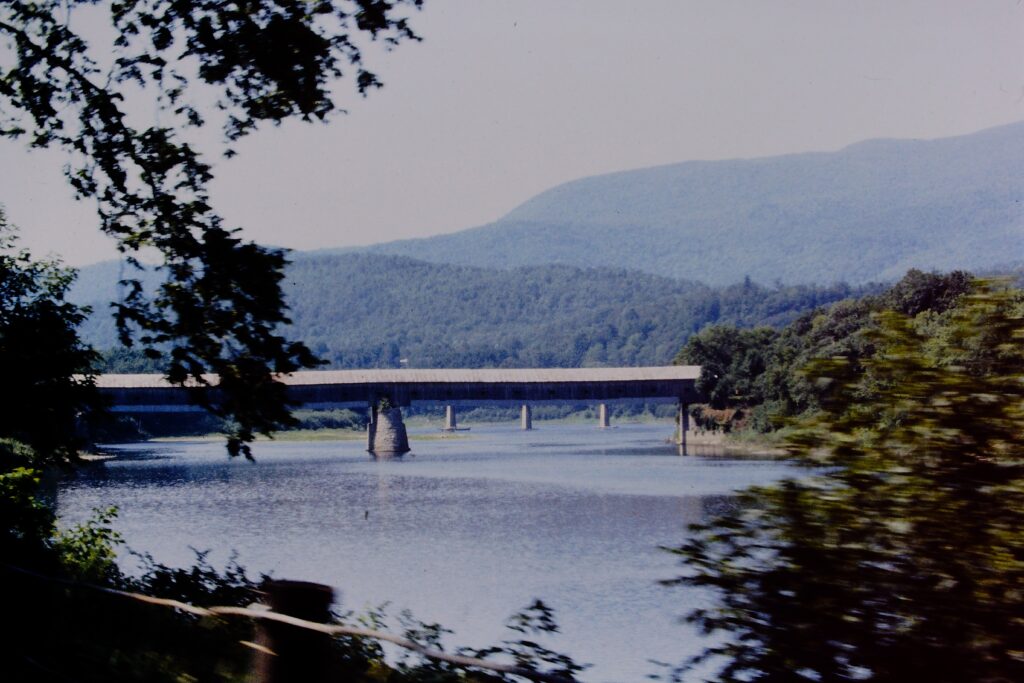New Hampshire/Vermont
August 1983
Marc was my boss at the Co-op in Pittsburgh. That’s how we met. Our friendship has lasted far longer than any employment relationship.
Somewhere along the way, Marc moved to a cabin in the woods of New Hampshire. A city boy he’s not.
Lisa and I visit with Marc and his wife for a few days.
Behold: Marc had set up a computer-controlled house utility system long before anyone had heard the phrase “smart home” or “the internet of things.” Maybe he is a city boy, but one who lives in the country.
Leaving after our visit, and an extensive tour of the most elaborate private civilian coffee preparation facility imaginable, built by Marc in his basement, we go back past Saint-Gaudens to the Parrish Highway and in a couple of miles, turn right over the Windsor-Cornish covered bridge. Or is that the Cornish-Windsor bridge? And did we drive over the bridge or, since it is a covered bridge, maybe we drove through it? Such convolutions!

The Cornish-Windsor Bridge is the second longest covered bridge in the United States. It held the #1 spot for many years, earning it a place on the National Register of Historic Places. Four hundred and fifty feet long, it connects the two states of Vermont and New Hampshire. Interesting phenomenon here. Ordinarily, borders between two geopolitical areas divided by rivers are drawn right down the midline of the water, equidistant from each shore. In this case however, the border lies on the low water mark on the Vermont shore. This means that any bridge over the Connecticut River, which divides Vermont from New Hampshire, is geographically within the state of New Hampshire. In fact, the state of New Hampshire officially purchased the Cornish-Windsor Bridge from a private owner in 1936.
Controversy continues. Vermont owns nothing of the bridge and that’s the share they are interested in contributing for upkeep: nada. New Hampshirites believe this is an unfair system since the bridge is equally important to Vermonters as it is to New Hampshirites.
In a nod to the past, a sign on the vertical truss on the west end of the bridge, the Vermont side, states…
WALK YOUR HORSE
OR PAY TWO DOLLAR FINE
I think the horse doesn’t care.
